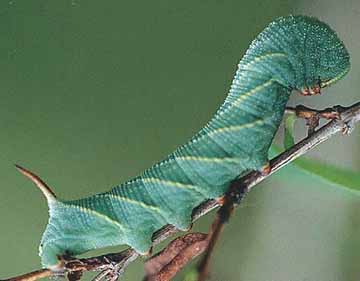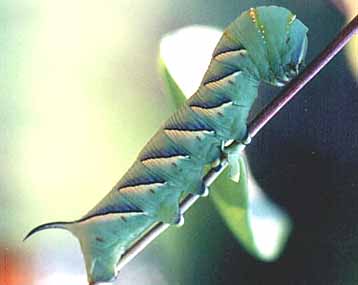Sphinx vashti
Snowberry Sphinx
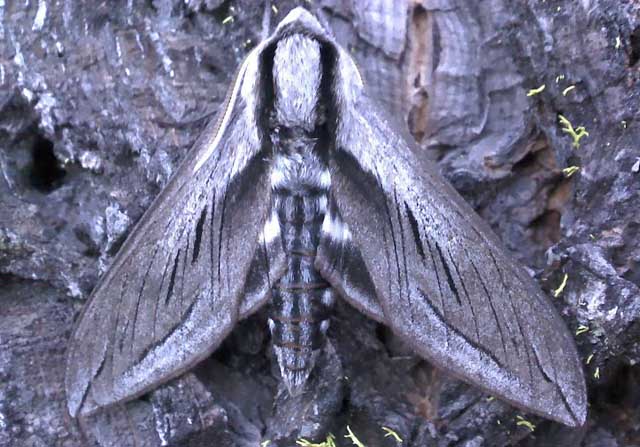
Sphinx vashti, Oregon, June 8, 2013, courtesy of Matthew J. Campbell
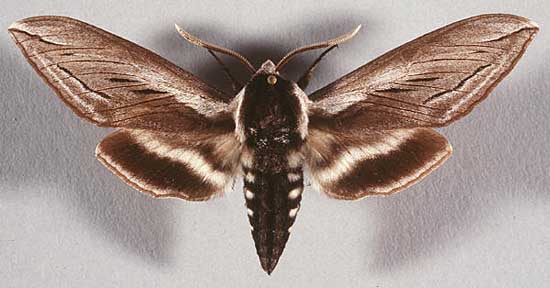
Sphinx vashti courtesy of the Royal British Columbia Museum.
This site has been created by Bill Oehlke
Comments, suggestions and/or additional information are welcomed by Bill.
TAXONOMY:
Family: Sphingidae, Latreille, 1802
Subfamily: Sphinginae, Latreille, 1802
Tribe: Sphingini, Latreille, 1802
Genus: Sphinx Linnaeus, 1758 ...........
Species: vashti Strecker, [1878]
|
DISTRIBUTION:The Snowberry Sphinx, Sphinx vashti, (Wingspan 68 to 94 mm),
flies from Texas west to California, north to British Columbia and east to Manitoba. The specimen to the right, in typical resting pose, is from southern
Vancouver, British Columbia, courtesy of Jeremy B.Tatum and Dr. John Snyder.
The basic ground colour of the wings varies from pale gray to almost black. The upperside of the forewing has a narrow black subterminal
line bordered by a white inverted V-shaped line on the outside, and a black line running inwards from the apex of the wing. There are two
black dashes and a series of lines along some veins. The abdomen varies from pale gray to black with five light bands running dorso-ventrally.
Visit Sphinx vashti,
Adams Lake, British Columbia, courtesy of Kathy Francoeur. | 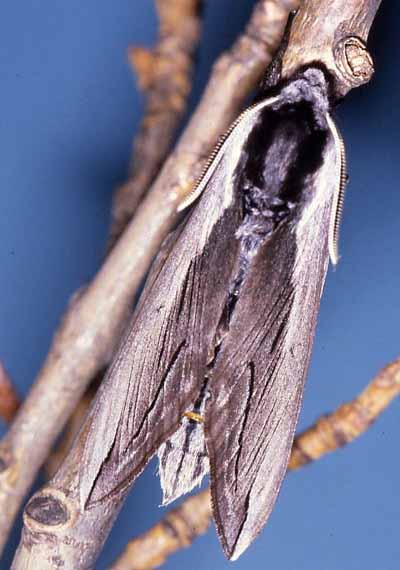 |
The image below is courtesy of Mary Matthews, Taylor, British Columbia, June 9, 2004.
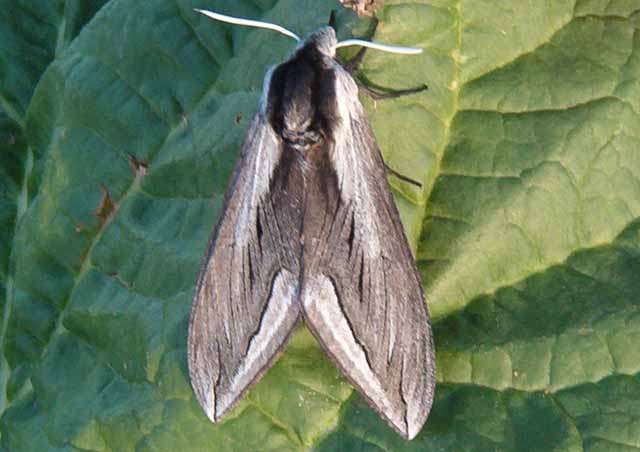
Sphinx chersis, Sphinx perelegans and Sphinx vashti are quite similar. Sphinx perelegans has a dark upper thorax with wide black bars
extending to the abdomen. In Sphinx chersis the entire thorax is uniform light blue-grey with very narrow dark lines.
Sphinx vashti, most similar to S. perelegans, lacks the checkered fringe on the hindwings. See image at top of page.
FLIGHT TIMES:
Snowberry Sphinx adults fly as a single brood in montane woodlands and along prairie stream courses from April to August.
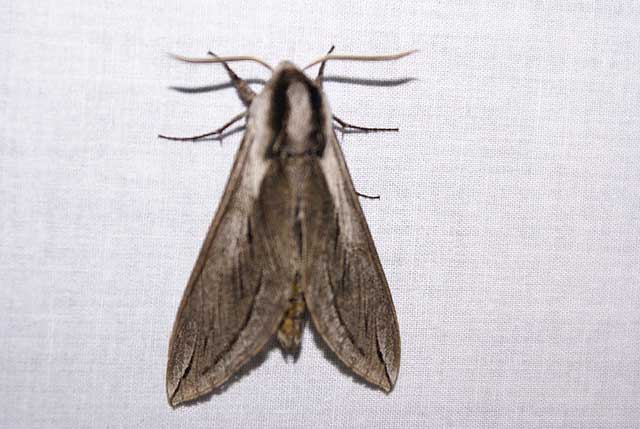
Sphinx vashti Kings Beach, Placer County, California,
taken at UV light, July 6, 2010, courtesy of Timothy Sakhuja.
ECLOSION:
Pupae probably wiggle to surface from subterranean chambers just prior to eclosion.
SCENTING AND MATING:
Females call in the males with a pheromone released from a gland at the tip of the
abdomen. Adults nectar at a variety of flowers, including honeysuckle (Lonicera) and columbine (Aquilegia).
EGGS, LARVAE, PUPAE:Mature larvae are green with seven pairs of lateral, white, oblique bands which
are bordered anteriorly with black. The anal horn is smooth and black. Perhaps the most distinguishing character is the series of golden yellow thoracic bands.
Larvae feed on the common snowberry (Symphoricarpos albus) and on coralberry (S. orbiculatus). Images courtesy of Jeremy B. Tatum and Dr.
John Snyder. | 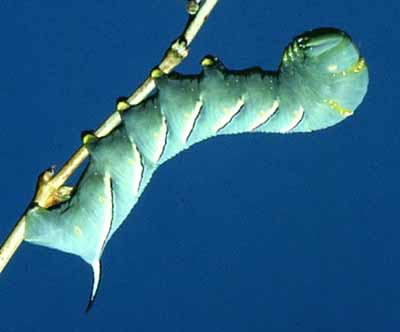 |
The fourth instar (left) and fifth instar (right)
Sphinx vashti larvae above are courtesy of Steve Ife from British Columbia.
Many thanks to Matthew J. Campbell who provides the following series of what appear to be second to possibly early fifth instar larvae.
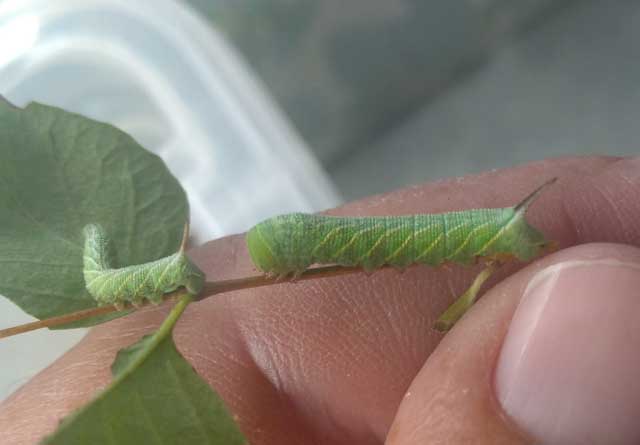
Sphinx vashti second/third instars, Oregon,
June 23, 2018, courtesy of Matthew J. Campbell.
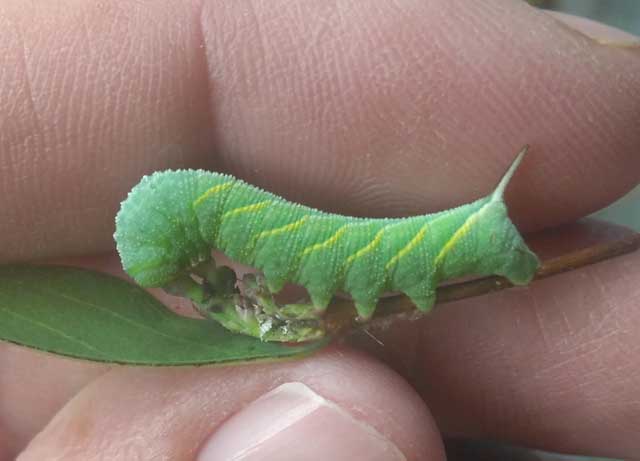
Sphinx vashti second/third instar, Oregon,
June 23, 2018, courtesy of Matthew J. Campbell.
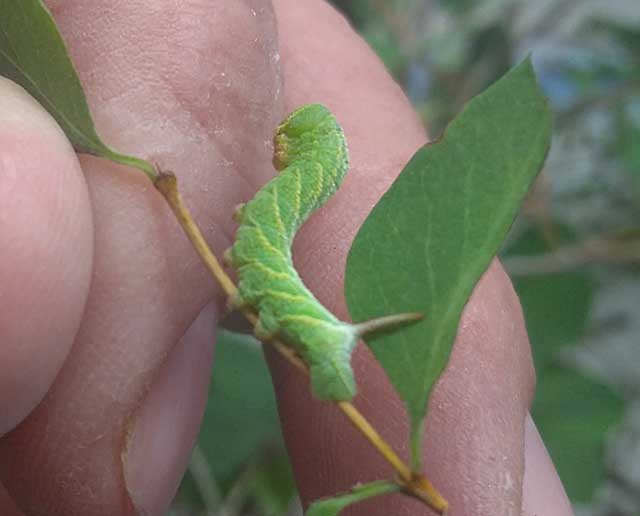
Sphinx vashti second/third instar, Oregon,
June 23, 2018, courtesy of Matthew J. Campbell.
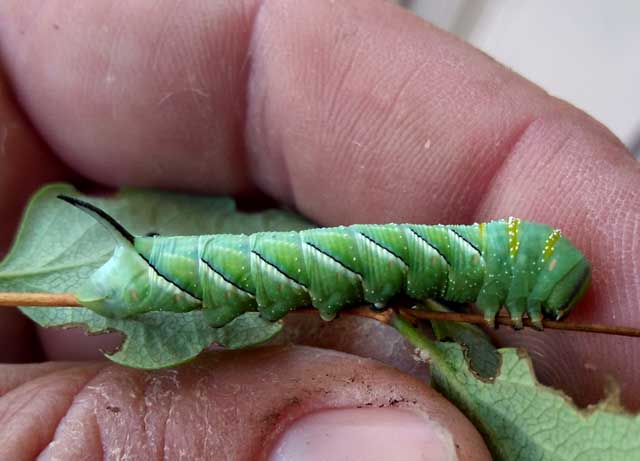
Sphinx vashti fourth or early fifth instar, Oregon,
June 28, 2018, courtesy of Matthew J. Campbell.
Joanna Rotecka provides the following three stunning images from Rock Creek, British Columbia.
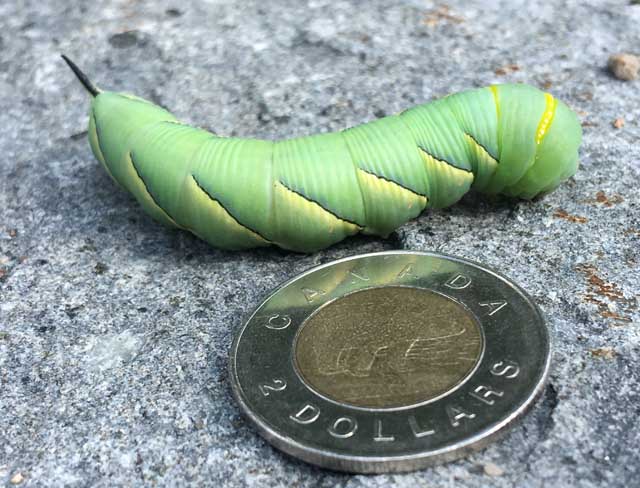
Sphinx vashti fifth instar, Rock Creek, British Columbia,
August 7, 2016, courtesy of Joanna Rotecka.
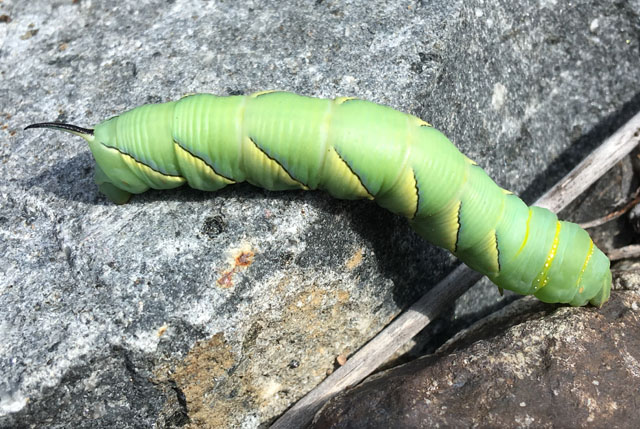
Sphinx vashti fifth instar, Rock Creek, British Columbia,
August 7, 2016, courtesy of Joanna Rotecka.
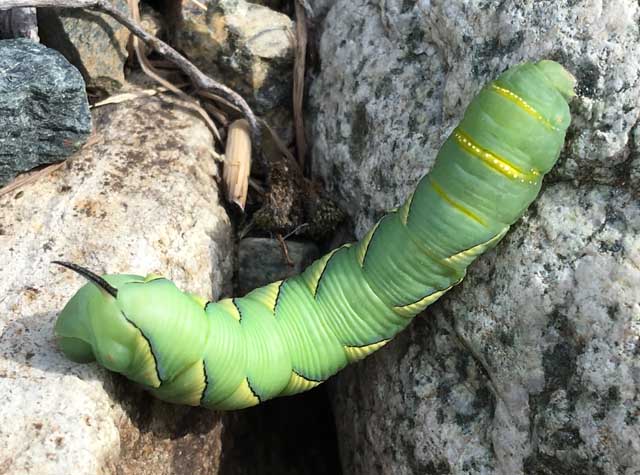
Sphinx vashti fifth instar, Rock Creek, British Columbia,
August 7, 2016, courtesy of Joanna Rotecka.
The pupa is a light chestnut brown with a sharp
cremaster and projecting tongue casing. | 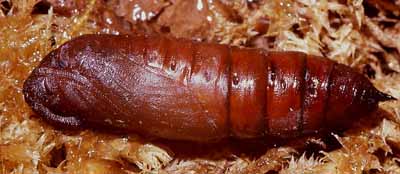
|
Return to Sphingidae Index
Return to Sphingini Tribe






